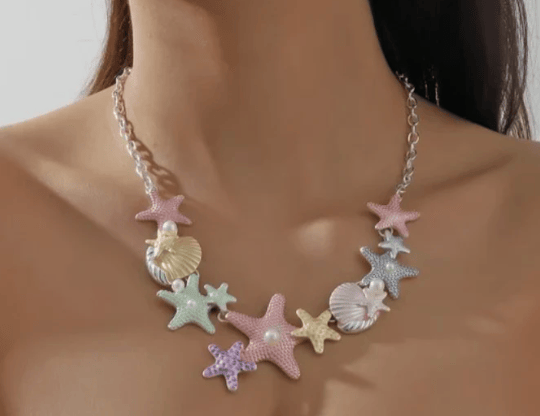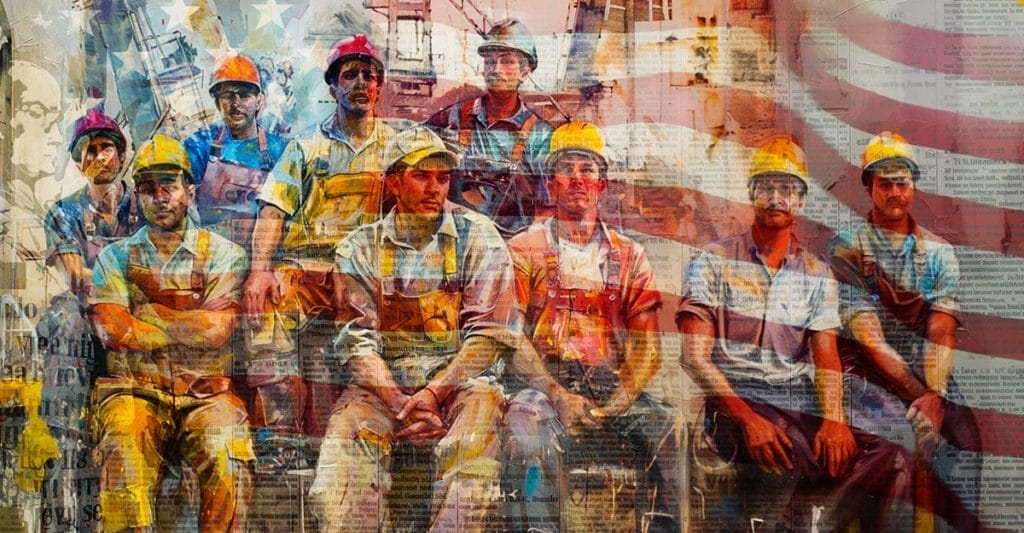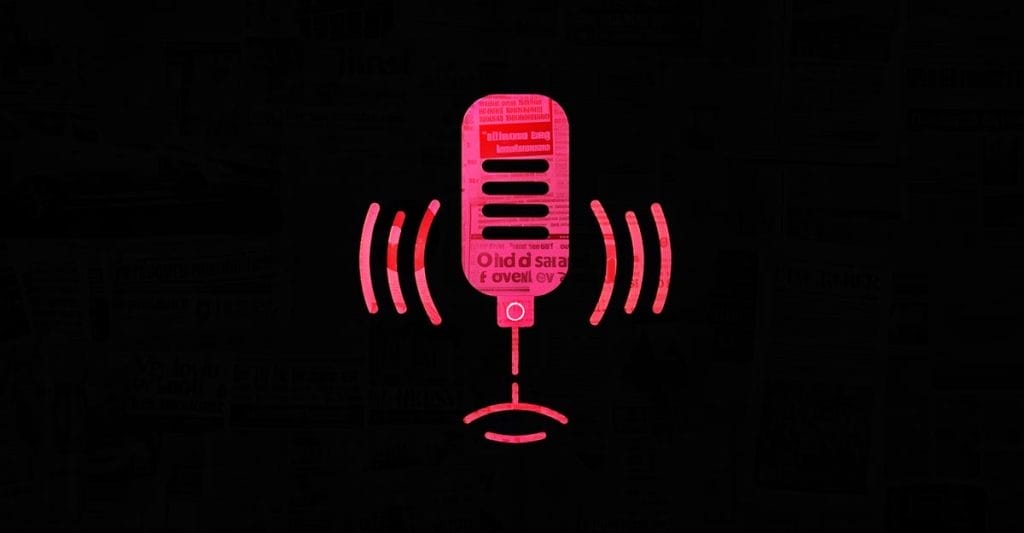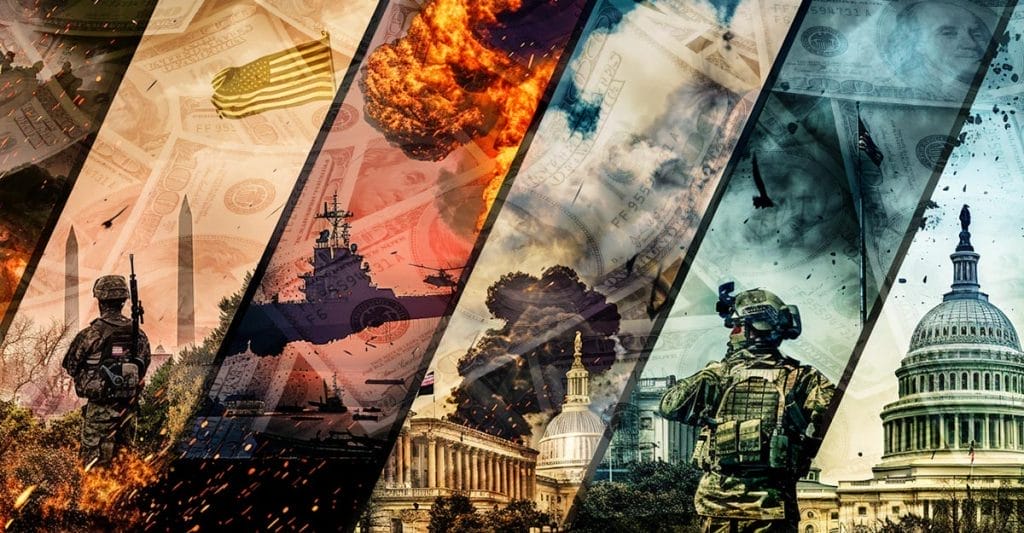Millions of Americans pay union dues, and a lot of that money ends up in the pockets of politicians, mostly Democrats. In 2020, the largest union, the Teamsters, endorsed Joe Biden. This time, they also met with Trump. That meeting led to the first donation by Teamsters to the GOP in years. And, as one member of the board called it, “a tacit endorsement of Trump.” Today, Lisa Fletcher follows the money to trace the political influence of unions.
The following is a transcript of a report from “Full Measure with Sharyl Attkisson.” Watch the video by clicking the link at the end of the page.
Lisa: What connections have you made between the unions and political influence?
David Osborne: Unions are the most powerful players in every state house. They really dominate not only their sphere of influence — so think teachers’ unions affecting educational policy. They affect nearly everything from election reform to taxing and spending.
David Osborne works with the Commonwealth Foundation, which advocates for less government involvement in the economy.
Osborne co-authored a report revealing how those unions spend their membership dues and discovered politics domiINnates the equation.
Osborne: It turns out that about 60% of overall union political spending comes from membership dues.
Lisa: Is it supposed to be that way?
Osborne: So, that old union political line about membership dues not going to politics is officially dead. Union dues are used for politics all the time, everywhere from local political spending on school board races, on governorships, and house races. Not only that, but they also use it and send it to super PACs and dark money groups who are interested in affecting elections all throughout the country.
Lisa: Do you think union members know that their union dues are going to political campaigns?
Osborne: Many of them definitely do not know that their union dues are going to fund political campaigns. You know, union members should be able to control how their money is spent, and yet they’re not. There’s a First Amendment problem with public employees having their money taken out of their paychecks and then used for political causes with which they may or may not agree.
Lisa: How are unions being rewarded for putting certain political candidates in office?
Osborne: If they can get a different school board elected, if they can get a different house member elected, or even a governor elected, then they have the ability to sit across the table from someone who owes them.
That tactic put into play in 2022 when Josh Shapiro, then the top recipient of government union money, won the governor’s race in Pennsylvania. Once elected, he returned the favor to unions representing service employees and state, county, and municipal employees.
Osborne: Within a year, he’s already negotiating collective bargaining agreements with some of his biggest campaign contributors. They received huge raises, about 20% raises, from what they had received the previous.
A similar play was made for Brandon Johnson, a former Chicago Teachers Union organizer elected mayor there last April.
Osborne: The teachers’ unions were very much involved in that, and they threw their weight around. Our report shows that about 96% of union political spending goes to Democrats. It’s very unbalanced, and really, even if you assume that membership is tilted in one way or the other, it’s certainly not tilted 96 to 4.
Government unions aren’t the only ones making big contributions to Democrats and liberal groups. So far in this election cycle, almost $20 million has come from the “Carpenters and Joiners” union. “Unite Here,” representing food service and manufacturing workers, has given $4 million. And the “Communications Workers of America,” representing employees in health care and customer service, have contributed more than $3.5 million.
Far less for Republicans and conservative groups.
Though cash is crucial for political parties, so is a union endorsement for a presidential candidate, particularly from one in a swing state like Michigan, where President Biden recently picked up support from the United Auto Workers, whose 400,000 members will support him at the polls in November and potentially hand him the state.
That approval grew from a visit the president paid the union last September when he made history by being the first modern president to support striking workers by joining their picket line.
President Joe Biden: You deserve the significant raise you need.
In 2020, unions contributed more than $27 million to Biden and liberal groups supporting him. Unions gave Trump less than $360,000.
This time around, Biden has a similar advantage. So far, unions have contributed at least $3 million to his campaign. Trump shows no union contributions to date, but he is still competing for their vote.
Donald Trump: We just had a meeting with the Teamsters, and one of the biggest problems they have is millions of people are pouring into the country. And that’s a killer for the Teamsters. And I’m gonna stop it. And that’s why the Teamsters, I think, support me.
In January, former President Trump met with members of the Teamsters Union. It appears to have paid off. The Teamsters gave $45,000 to the GOP, the first major donation in years.
Donald Trump: We have a good shot, I think. They like what I do. They never had a better four years than they had during the Trump administration.
Lisa: Can you think of anything on the Republican side that has as much money and influence over politics as unions do on the Democratic side?
Osborne: No, there’s no real comparison. We often talk about leveling the playing field, because unions should be involved in politics to some degree. Sure, they’re an organization with interests, and yet they have all of these subsidies that make it a lot easier for them to engage in politics than any other organization.
Lisa: What do you see happening in 2024?
Osborne: Well, unfortunately, I think this trend is only increasing. Since 2012, union spending has basically tripled. It’s only going to increase. The more that they see that they can get something out of government, the more they’ll spend to try to impact it.
Sharyl: So, what is something else they can expect, as unions, to get from the candidate they back?
Lisa: Well, two years ago, President Biden spent about $36 billion in taxpayer money to bail out a fund that provides retirement benefits for private union members and retirees —about 360,000 of them. And just ahead of the Biden-Harris campaign in the last election cycle, the Teamsters union endorsed that ticket.
Watch story here.

The Lemonade Mermaid Store
Unique gifts for Land or Sea Mermaids, Mer-pets and Little Mermaids!
Left: Pastel Beach Necklace $16




1962 – JFK allowed government employees to unionize. This led to the massive concentration of power and wealth benefiting the teachers unions and SEIU we see today.
If one were to measure the exact moment America started going off the rails and the growth of untouchable Big Government, JFK’s 1962 executive order would be that moment that permanently divided America.
222 million people now working for the government at some level: federal, state, county, local, school districts and other special districts. 96% voting Democrat. There is no other concentrated voter block.
There is no other concentrated voter block who exists solely on our own tax dollars, yet votes against tax payer interests 100% of the time, in favor of themselves..
Was it Richard Nixon and Chuck Colson who received large bags of cash from the Teamster Union delivered to the WhiteHouse? Didn’t Richard Nixon resign the Presidency? Did Chuck Colson go to prison following the Teamster cash Bribe scandal?